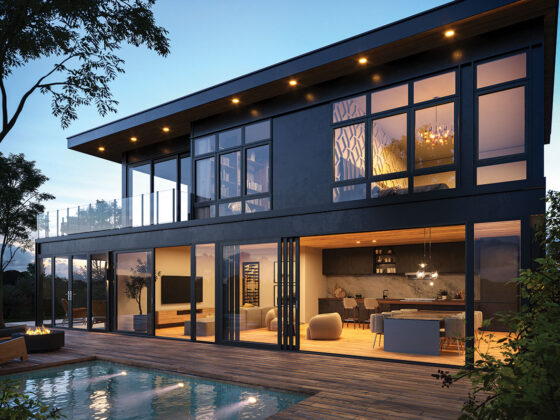
The “slow decorating” trend offers a relaxing approach to creating a home you love.
Story by Tracy Dickinson
Featured in Autumn 2024
One of the hottest new trends in home decorating is actually nothing new. Known as “slow decorating,” this trend has less to do with one’s design preferences than it does with one’s outlook on life—seeing all of life, even how you go about decorating your home, as a journey, not a destination.
If you read design magazines, you might get the impression that an outdated look can only be updated in one fell swoop, tossing out all your existing decor and starting with a clean slate. Not only is this a much more expensive approach, but it’s based on the assumption that principles of design and current fashion are the only things that matter.
In fact, your home is more than a place to display the latest trends. And the things with which you surround yourself should be more than just things. They should reflect the people and places you love, the colors and styles that make you happy, and the unique journey that is your life.
Slow decorating takes that idea into consideration and is rooted in principles that apply to all of life, not just your decor.
Throw out your timeline
Don’t approach decorating with a firm deadline in mind. Give yourself the freedom to continue adding and adapting your design, letting your space evolve with you. Embrace the idea that, in reality, your home is never “done” and that making your home the place you want it to be is worth taking your time.
Rather than working toward some vision of what your finished space will look like, be willing to ease into decorating your home. With this approach, as the months and even years go by, you can incorporate items you find into the ever-changing design. Eventually your space will be an expression of the life you’re living, not the most popular trends of a specific year.
Embrace the idea that, in reality, your home is never “done” and that making your home the place you want it to be is worth taking your time.
Start with a good foundation
Although slow decorating is spread out over time, plan to invest in foundational elements at the beginning. Key pieces of furniture such as the sofa, the bed, and the dining table can anchor both your space and your ongoing design choices. Adding more later also helps spread out the cost.
And with quality pieces as focal points, you can be more flexible with accessory items as you build on that foundation. Those key pieces can also inspire color choices and finish selections for the walls, which set the tone for the room.
This approach also expands your vision. By starting with one piece and adding to the room over time, you aren’t limited to a particular style. A vintage side table and your grandfather’s leather club chair can be the perfect complement to that new sofa. For instance mid-century modern dining chairs will give your custom table a new look.
Use what you have
A necessary consequence of slow decorating is that you will have to use what you have or get by with what you already have while you develop your design. But necessity has long been the mother of invention, and you might be pleasantly surprised to find new ways to repurpose or display old possessions.
The simple cedar chest your dad made years ago could be just the coffee table your family room needs. Those mismatched chairs around the kitchen table could be scattered throughout the house—one in the guest room, one as a desk chair, and one in the mudroom beside the shoe caddy.
Making use of what you already own does more than save you money and refresh your decor. It keeps you connected to the people and the memories that come with those pieces, adding another layer to your decorating.
The principles of good design relating to proportion, contrast, and emphasis will always apply. But the principle of establishing balance might be what most represents slow decorating. The furnishings, colors, and accessories should all balance your space. Your approach to decorating should be balanced, too.
As James Taylor sang, “The secret of life is enjoying the passage of time.” That might be the secret to creating a home you love. •








